by Max Frankenberry, Assistant Bird Bander
After nine weeks of banding birds this summer, JHWF’s first MAPS season has officially come to an end. Every Wednesday and Friday sunrise, from June 6th to August 3rd, was spent setting up nets, collecting data on the birds we caught, and attaching small aluminum USGS-issued bands to their legs. All in all, this season produced 677 total bird captures, with 453 new birds banded this season.
Bird banding is a highly-effective research method used worldwide for tracking bird movement, survival rates, and reproduction success. Banders are trained in specialized bird handling, safety, and data collection, and can only legally band birds if covered under state and federal permits. Each band number is unique to each individual bird. Banders report both new bands placed on previously unbanned birds, and bands that are on birds that they recapture after already being banded before. Other data like age, sex, weight, and various conditions are also collected and reported, forming the massive database of information that USGS and various ornithological groups manage and analyze.
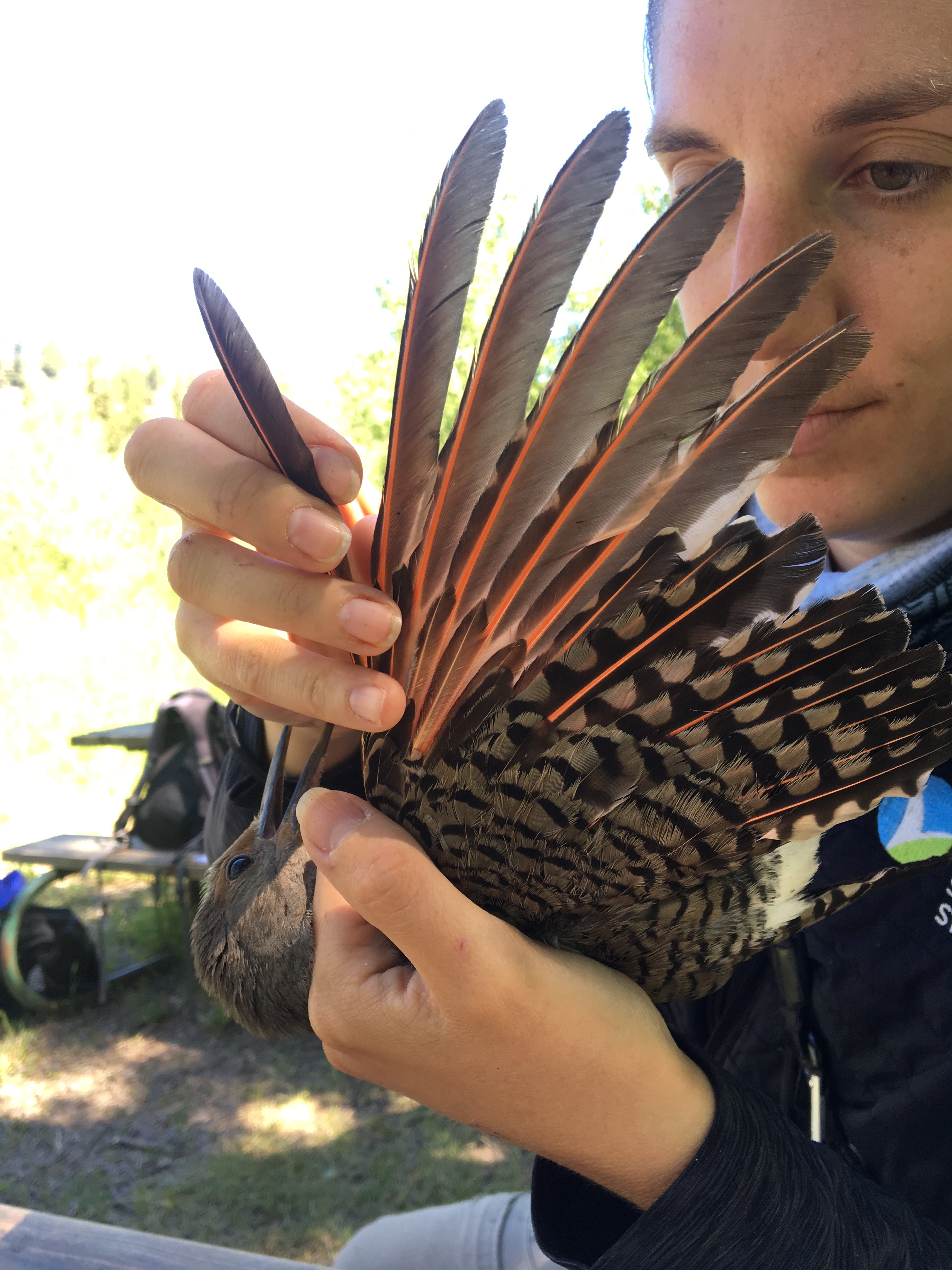
Lead Bird Bander Kate Maley attempts to age this Red-shafter Flicker (Colaptes auratus) by inspecting flight feather characteristics
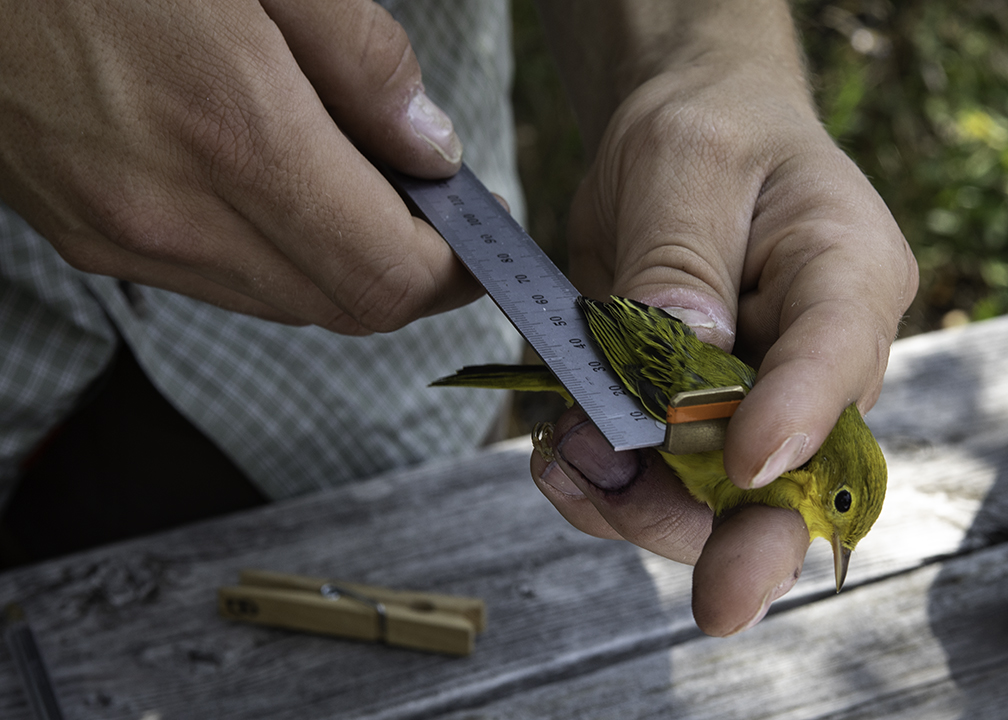
Assistant Bird Bander Max Frankenberry measures the wing chord length of a Yellow Warbler (Setophaga petechia) Photo credit: David Hopkins
MAPS stands for Monitoring Avian Productivity and Survivorship. It is a specific banding program begun by the Institute for Bird Populations (IBP), with a goal of better understanding survival rate and nesting success while birds are at their summer breeding grounds. JHWF bands birds following IBP protocol — opening nets at sunrise and closing them six hours later — and submits data to the IBP database. This builds on the years of previous data collected on birds in Jackson Hole from Teton Science Schools (TSS) and Teton Raptor Center (TRC), who helped transition the program to us this year. Our two banding locations, Teton Science Schools’ Kelly campus and Boyle’s Hill on their Jackson campus, have been contributing data without a break in observations for 28 and 16 years respectively. Kelly is one of the longest operating MAPS stations in the country! Long-term, uninterrupted data sets are crucial to understanding trends in bird population shifts. Thanks again to TSS and TRC for making the transitions between organizations so smooth!
The 2018 season ended with 180 recaptures (out of 677 total captures) of previously banded birds, with several of these birds having been banded even before the 2017 season. Much like years before and not surprising to those of us that live in Jackson Hole, our most popular species caught were Yellow Warblers and American Robins (AMROs). In total, 109 new Yellow Warblers (or YEWAs in banding code) had bands placed on their legs this year, many of them young birds born this summer. YEWAs are doing just fine in our valley! American Robins were our second most common bird this year, with 57 new birds banded. While we had constant flows of incoming YEWAs and AMROs, we also had a few particularly exciting individuals as well. By far the most unexpected were a pair of Belted Kingfishers, each caught a week apart from each other! While kingfishers are not uncommon here, they are rarely caught in banding stations, mostly due to their preference for flying much higher than the nets and perching on trees overhanging water.
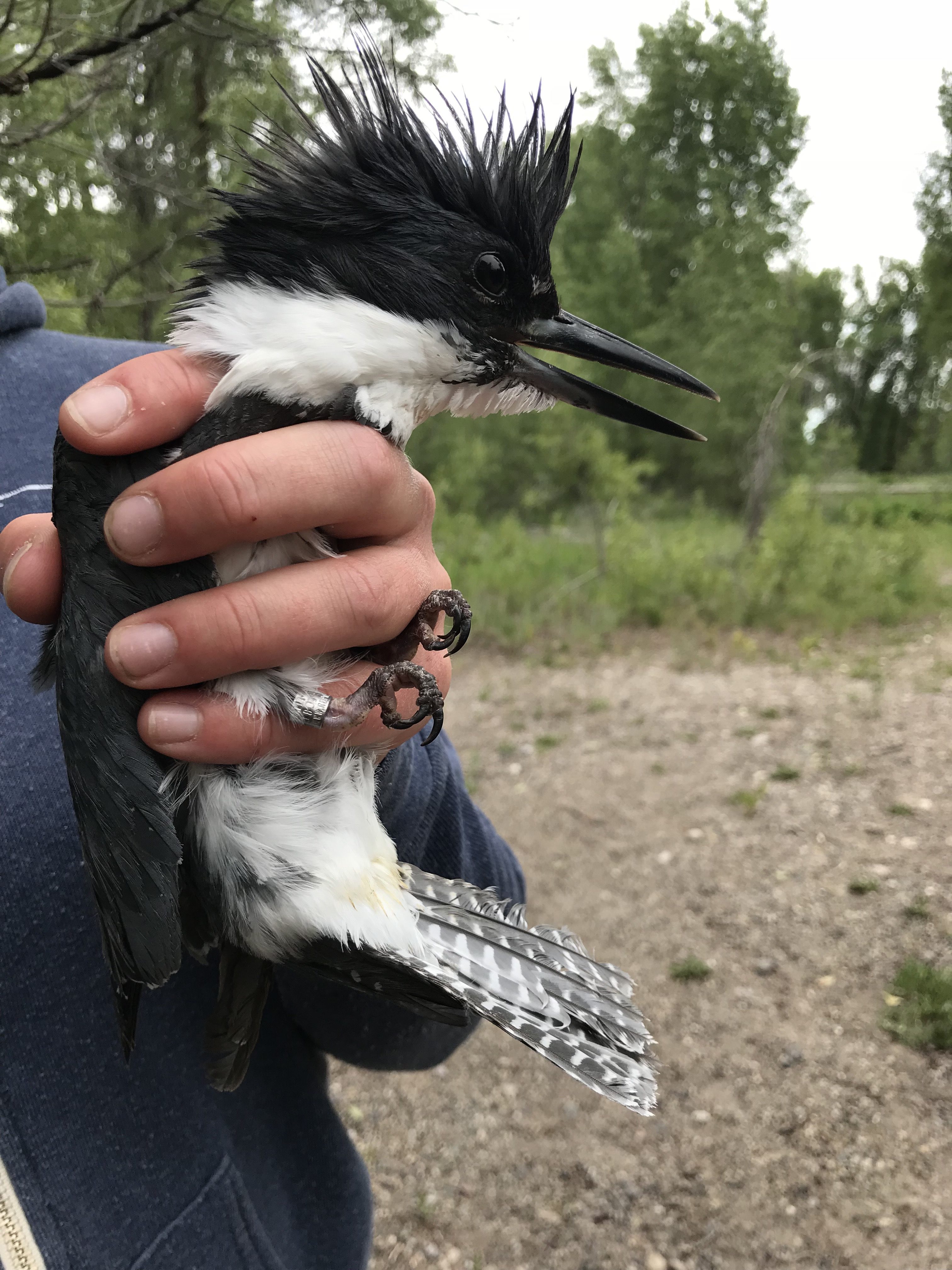
Male Belted Kingfisher (Megaceryle alcyon)
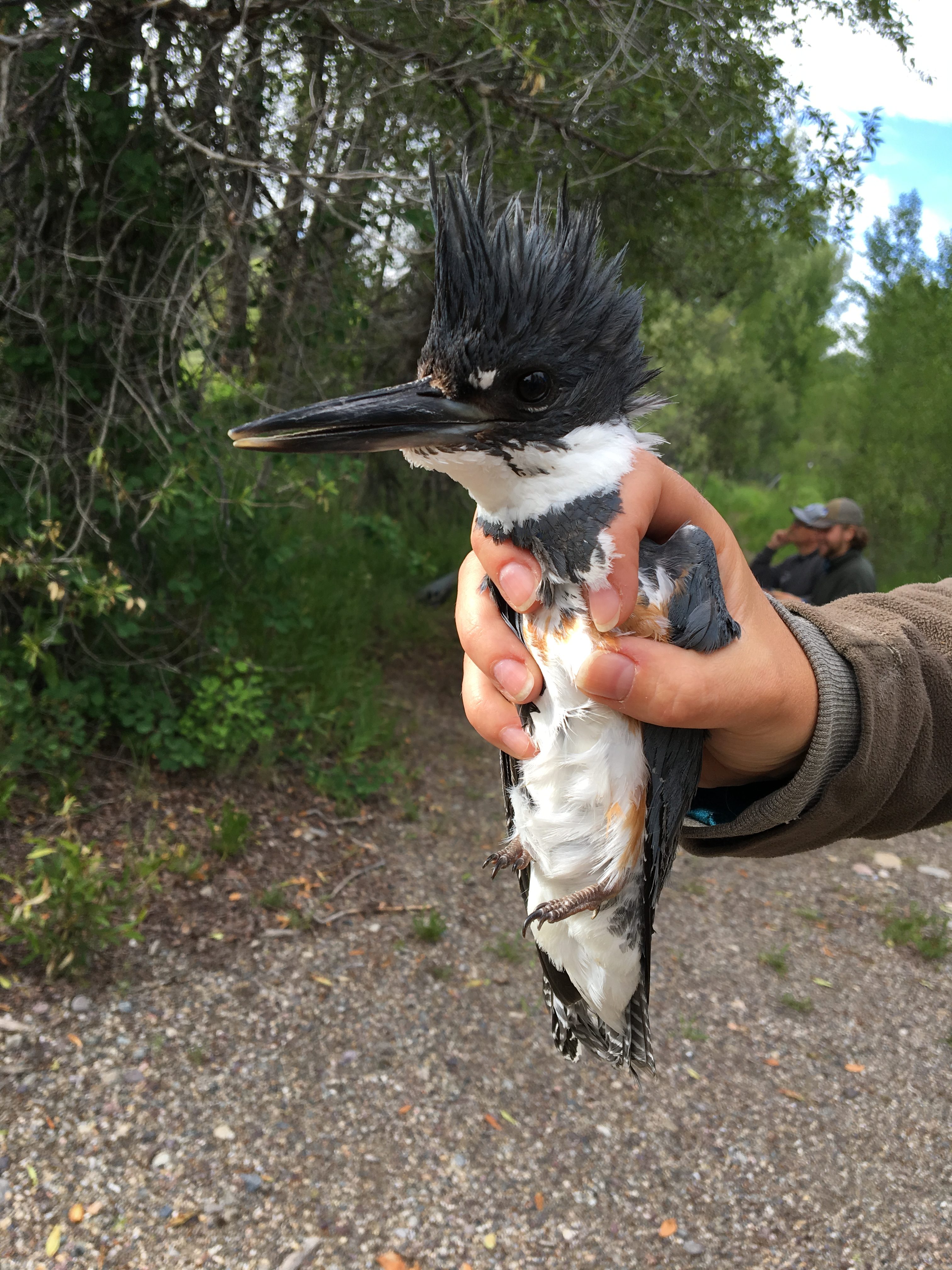
Female Belted Kingfishers have a rusty belly band (Megaceryle alcyon)
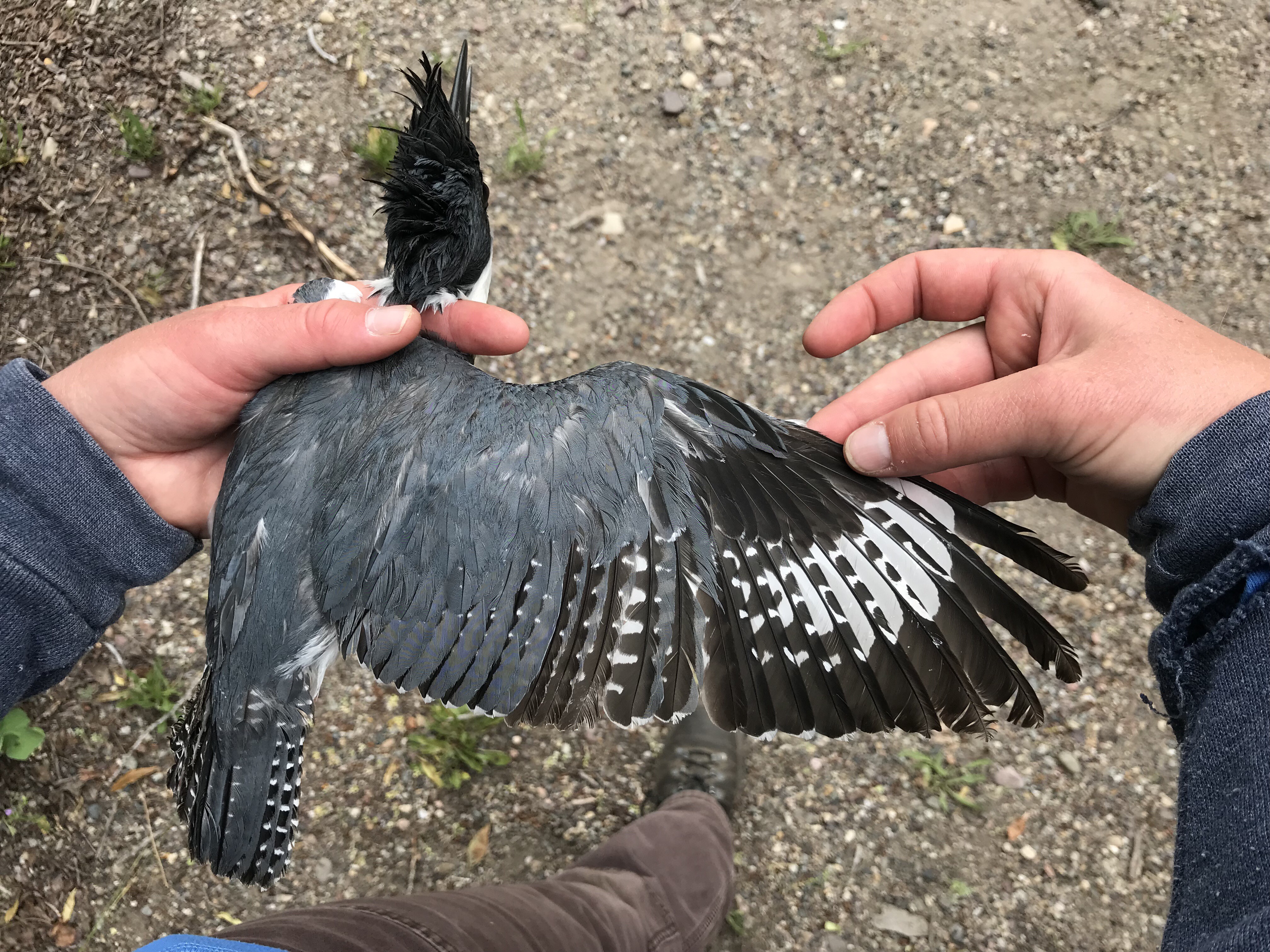
Belted Kingfishers have detailed white patterns on their flight feathers – we can use these to figure out how old the birds are!
We were excited to say the least. Other species that graced us with their surprising presence were a very vocal Olive-sided Flycatcher and a juvenile Brown Creeper. We also had 40 birds that were captured and released but not banded, including large number of Rufous, Calliope and Broad-tailed Hummingbirds (our banding permit does not allow hummingbird banding – that requires additional specialized training). Overall we captured 45 different species of birds over 9 weeks. This guaranteed that we never had a slow morning at either banding station!
Other wildlife sightings always kept us on our toes throughout the season – early mornings at Kelly and Boyle’s Hill allowed us views of several moose and calves, foxes, a grizzly bear, a family of otters, and even an elusive mountain lion! Sunrise work with birds in the Greater Yellowstone Ecosystem meant bear spray and our favorite badly-sung show tunes had to always be at the ready.
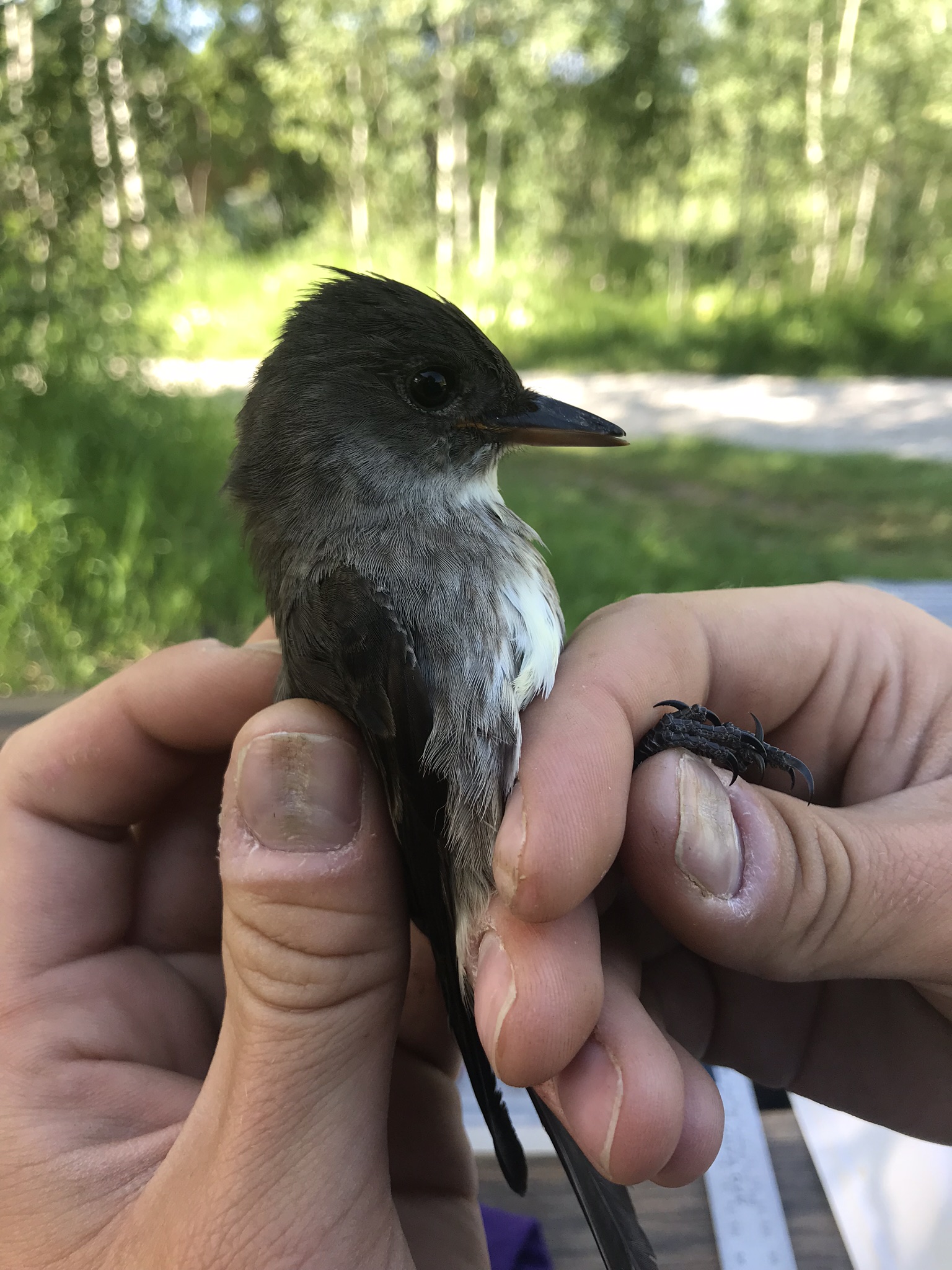
Olive-sided Flycatcher (Contopus cooperi)

Male Black-headed Grosbeak (Pheucticus melanocephalus)
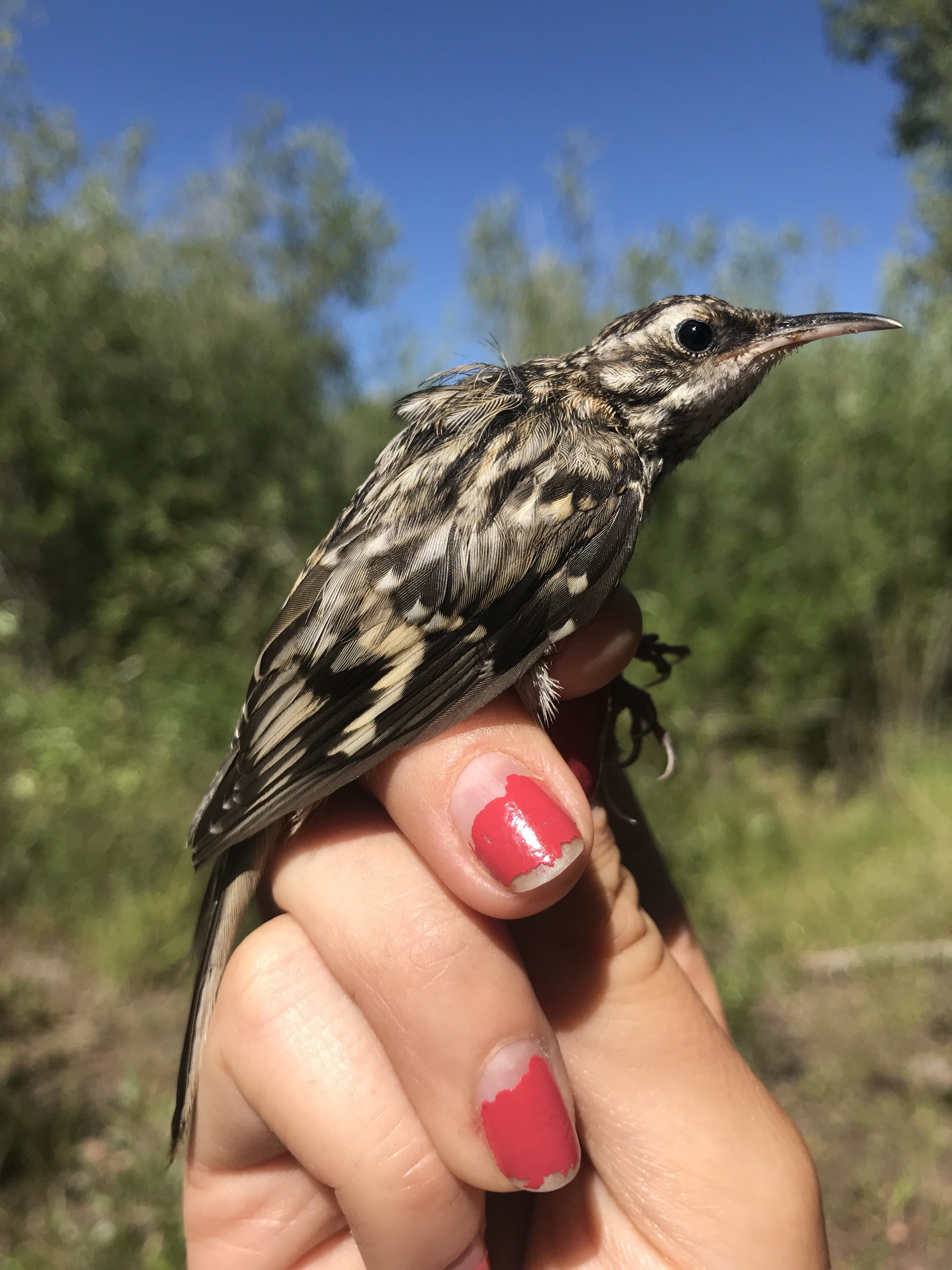
Juvenile Brown Creeper (Certhia americana)
We want to thank all who have made this program possible. This effort to track birds in our valley really does contribute extremely valuable data to a great continent-wide program. The MAPS data has resulted in many highly regarded publications on the state of bird populations in North America and new ways to manage and preserve them. Thanks for being “for the birds”!
Below is a full list of the species we captured and banded this season. Look them up and try to spot some of them in your own backyard!
- Calliope Hummingbird
- Broad-tailed Hummingbird
- Rufous Hummingbird
- Belted Kingfisher
- Red-naped Sapsucker
- Downy Woodpecker
- Red-shafted Flicker
- Olive-Sided Flycatcher
- Western Wood-Pewee
- Willow Flycatcher
- Dusky Flycatcher
- Warbling Vireo
- Violet-Green Swallow
- Black-Capped Chickadee
- Mountain Chickadee
- Red-breasted Nuthatch
- White-breasted Nuthatch
- Brown Creeper
- House Wren
- Golden-crowned Kinglet
- Ruby-crowned Kinglet
- American Robin
- Swainson’s Thrush
- Hermit Thrush
- Gray Catbird
- Cedar Waxwing
- Orange-crowned Warbler
- Yellow Warbler
- Audubon’s Warbler
- MacGillivray’s Warbler
- Wilson’s Warbler
- Western Tanager
- Black-headed Grosbeak
- Green-tailed Towhee
- Brewer’s Sparrow
- Chipping Sparrow
- Mountain White-Crowned Sparrow
- Fox Sparrow
- Song Sparrow
- Dark-eyed Junco
- Brown-headed Cowbird
- Bullock’s Oriole
- Cassin’s Finch
- Pine Siskin
- American Goldfinch
